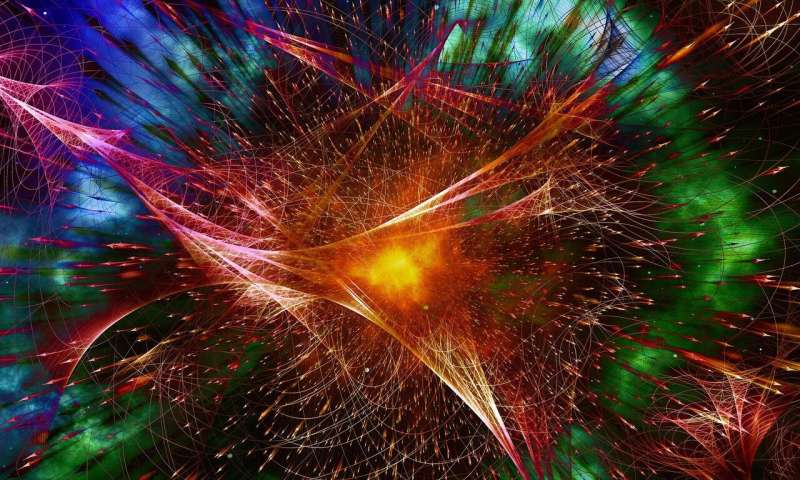Giant quantum tornados in a hybrid light-matter system give insight into complex physical phenomena

Researchers from Skoltech and their colleagues from the UK have managed to create a stable giant vortex in interacting polariton condensates, addressing a known challenge in quantized fluid dynamics. The findings open possibilities in creating uniquely structured coherent light sources and exploring many-body physics under unique extreme conditions. The paper was published in the journal Nature Communications.
In fluid dynamics, a vortex is a region where a fluid revolves around a point (2D) or a line (3D); you've clearly seen one in your sink or may have felt one in the form of turbulence while flying. The quantum world also has vortices: The flow of a quantum fluid can create a zone where the particles revolve persistently around some point. The prototypical signature of such quantum vortices is their singular phase at the core of the vortex.
Skoltech Professors Natalia Berloff and Pavlos Lagoudakis and colleagues studied vortices created by polaritons—odd hybrid quantum particles that are half-light (photon) and half-matter (electrons)—forming a quantum fluid under the right conditions. They were looking for a way to create vortices in these polariton fluids with high values of angular momentum (i.e., getting them to rotate fast). These vortices, also known as giant vortices, are generally very hard to obtain as they tend to break apart into many smaller vortices with low angular momentum in other systems.
Creating stable giant vortices shows that non-equilibrium (open) quantum systems, like polariton condensates, can overcome some severe limits of their thermodynamic equilibrium counterpart such as Bose-Einstein condensates of cold atoms. Control over the vorticity of a quantum fluid could open new perspectives on analog simulation of gravity or black hole dynamics in the microscopic world. Moreover, the polariton condensate continuously emits photons that carry all the intricacies of the vortex which could become important for optical data storage, distribution, and processing applications.
The researchers had been working on using interacting polariton condensates as candidates to simulate a planar vector model known as the XY model. They realized that when multiple condensates were arranged into a regular polygon with an odd number of vertices the ground state of the whole system could correspond to a particle current along the polygon edge. By going from a triangle, pentagon, heptagon, and so on, the authors showed that the current rotated faster and faster, forming a giant vortex of varying angular momentum.
"The formation of stable clockwise, or anticlockwise, polariton currents along the perimeter of our polygons can be thought of as a result of geometric frustration between the condensates. The condensates interact like oscillators that want to be in antiphase with each other. But an odd-numbered polygon cannot satisfy this phase relation because of its rotational symmetry, and therefore the polaritons settle for the next-best thing which is a rotating current," first author Tamsin Cookson says.
"This is a very nice demonstration of how polaritons can provide a very flexible sandbox to probe some of the more complex phenomena of nature. What we show here is a system that shares a lot of characteristics with a black hole, which still emitting, a white hole if you wish." Professor Lagoudakis adds.
More information: Tamsin Cookson et al, Geometric frustration in polygons of polariton condensates creating vortices of varying topological charge, Nature Communications (2021). DOI: 10.1038/s41467-021-22121-3
Journal information: Nature Communications
Provided by Skolkovo Institute of Science and Technology





















